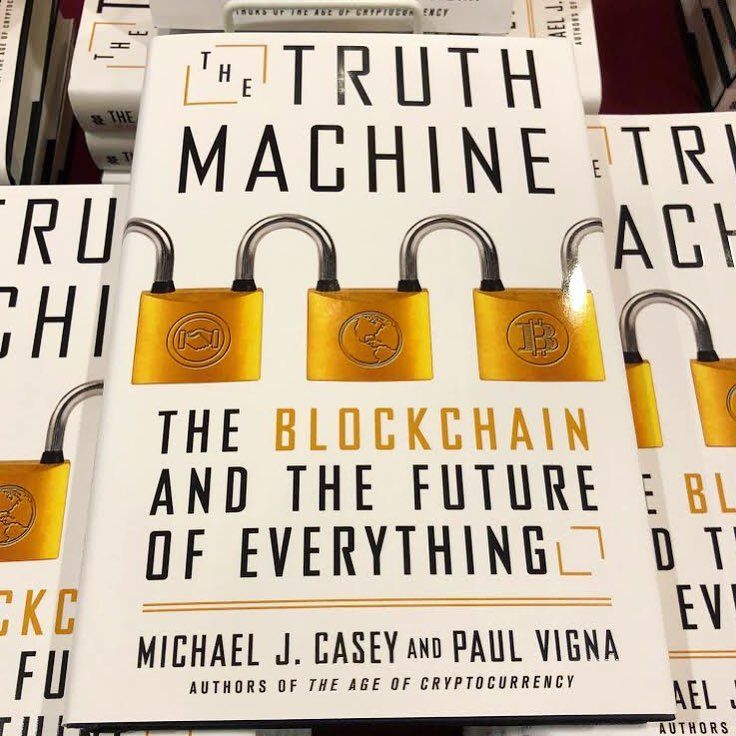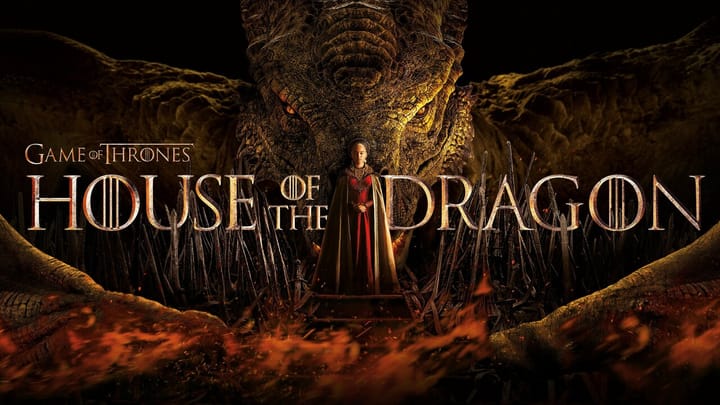This book is essential for understanding the potential future use cases of Bitcoin and cryptocurrency.
Notes
Use cases for blockchain (non-exhaustive):
- Inviolable property registries, which people can use to prove that they own their houses, cars, or other assets;
- Real-time, direct, bank-to-bank settlement of securities exchanges, which could unlock trillions of dollars in an interbank market that currently passes such transactions through dozens of specialized institutions in a process that takes two to seven days;
- Self-sovereign identities, which don’t depend on a government or a company to assert a person’s ID;
- Decentralized computing, which supplants the corporate business of cloud computing and Web hosting with the hard drives and processing power of ordinary users’ computers;
- Decentralized Internet of Things transactions, where devices can securely talk and transact with each other without the friction of an intermediary, making possible big advances in transportation and decentralized energy grids;
- Blockchain-based supply chains, in which suppliers use a common data platform to share information about their business processes to greatly improve accountability, efficiency, and financing with the common purpose of producing a particular good;
- Decentralized media and content, which would empower musicians and artists—and, in theory, anyone who posts information of value to the Net—to take charge of their digital content, knowing they can track and manage the use of this “digital asset.”
In the future, crypto wallets could be accessible with an iris scan—the most secure biological authenticator.
In the future, all housing deeds and other important documents will be on the blockchain. There will be no counter-party risk and no chance of government incompetence or corruption.
The UN World Food Program uses blockchain.
The World Bank is researching crypto to try to help poor countries.
Money is simply a ledger that stores information about an individual’s wealth. Can society trust the ledger keeper? Historically, one would have to trust a carrier to transfer coins to the recipient. Today we have banks, but can we trust the banks? Lehman brothers essentially overbooked their ledger and led to the 2008 financial crisis. Also, these ledgers are not open to the public, so we must trust and assume that the banks are doing the right thing behind the scenes.
You also have to trust your card (Visa, MasterCard) to do the transaction. Sometimes you have to trust Venmo or Cash app on top of that. All of these layers add risk.
The blockchain is “the truth machine” from the book title.
Lehman brothers had shady accounting—it was manipulating its ledgers. Lehman Brothers was doing great in 2007 and less than a year later they were bankrupt. They would move billions of dollars in debt off the books at the end of a quarter for reporting. It would stack them in a repurchase facility, an accounting loophole. It would over-value its difficult-to-value assets. Lehman Brothers essentially had two ledgers—one for the public and one for insiders (employees). The government bailed out the banks and essentially allowed this system to continue. This is a commonly cited argument for why the traditional finance system cannot be trusted.
Double-entry ledgers became popular around the time of Columbus. They allowed one to credit and debit the ledger. The bankers were able to “move money” without having to transport the physical currency. This set the stage for the renaissance and modern capitalism.
We tend to trust bank’s accounting—we even trusted Lehman’s books before the financial crisis. Most of their accounting is actually guessing—guessing what percent of their loans will be paid back, for example. This has drastic impacts on quarterly and yearly revenues.
The blockchain allows for on-chain analysis. This means that anyone can view the blockchain ledger and verify that it is correct. This could solve the trust issues that have been stirring in the US since Occupy Wall Street and throughout the world since events such as the Arab Spring and The European sovereign debt crisis.
Cryptography is what allows us to use or view any sensitive information on the internet.
Blockchains have what is called a triple entry ledger. 2 entries that show debits and credits and another that gives a verification time stamp. This time stamp ensures that the transition occurred at the stated time.
Another commonly cited argument is Bernie Madoff, who made fake accounting books.
Society is not based on truth—it is based on what we collectively agree to be true (narratives). This explains why people are polarized—the side that wins controls the “Truth”.
The blockchain is not the ultimate truth, it is a tool that brings us closer to a consensus on the truth. It cannot be 100% the truth because some things (hacks, bugs, oracles, 3rd party entering, layer 2’s, human error, etc) keep it from being 100% accurate.
Huge servers make it so cheap to store data that it isn’t even deleted anymore. Consumers with IOT devices and cloud servers storing data mean that hackers can get all kinds of info.
The MH370 airplane that went missing could have been because of a hacker.
Hackers typically go after a company’s servers because there is access to millions of people’s info or money but crypto changes this because the money is stored directly on a person’s device. This means hackers need to hack each phone at a time (if they even can) and it makes it not worth it anymore (high effort, low payout).
Hackers sometimes try to get medical records and hold them for ransom. The medical industry could benefit from having that info on a private blockchain. Sometimes hackers can make it so the hospital can’t get the medical records—and this can be life or death. Medrec is trying to make medical records on the blockchain.
- The patients use their private key to share the specific information they want with the hospital.
More uses for blockchain:
- Internet of Things solutions will require a decentralized system for machine-to-machine transactions;
- Virtual reality content creation, by which future imaginary worlds will be collaboratively produced by writers and coders, could use a blockchain system for divvying up royalties via smart contracts;
- Artificial intelligence and Big Data systems will need a way to assure that the data they are receiving from multiple, unknown sources has not been corrupted;
- “Industry 4.0” systems for smart manufacturing, 3D printing, and flexible, collaborative supply chains need a decentralized system for tracking each supplier’s work processes and inputs.
We all trust our computers even though it is technically possible that there is malware that can copy all of our keyboard inputs in the chips that Apple, Samsung, etc use. We trust that they have strict supply chain monitoring to make sure that doesn’t happen.
Applications of blockchain technology do not solve everything. We still need to trust that a merchant will ship the goods once we pay. We still need to trust that a merchant using the lighting network won’t charge us twice.
Censorship resistant means nobody can hack or change the ledger.
Proof of work required nodes to do a complex function to try to find the correct number. This used a lot of computational energy and power—it is costly. This is what keeps a person from making a bunch of nodes to take over the bitcoin network by having 51% of accounts. <- this is not how it works because of proof of work. The number of nodes is not what controls the network, it is the % of computing power out of the whole network. 51%+ of the computing power of the network gives one control over the network. But that costs A LOT of money. The cost of a 51% attack grow exponentially. Double spending and fraud are not “illegal” in Bitcoin’s code, they are essentially just taxes to the point where it makes no economic sense. 51% attacks don’t make economic sense because the value of the bitcoin network is based on its ability to not be hacked or used for fraud. A 51% attack is fraud, so bitcoin would lose all value if a 51% attack did occur. So, it makes no sense to spend a lot of money to steal money that will lose value as soon as you steal it. It would be like robbing a bank but when you leave, the real money turns into monopoly money.
The bitcoin blockchain uses SHA 256 encryption. This adds every block to the blockchain in a sequence. This means that if any block were ever to be changed (which is incredibly difficult to do—51% attack) every subsequent block would be altered. This means that if hackers edited an old block from June 2015, every block since June 2015 would be altered—the hash numbers would be different and everyone would be able to tell that the blockchain has been altered.
Then there was the bitcoin vs bitcoin cash debate. Small blocks vs big blocks.
Segwit and lightning:
Then, out of the creative mind of Bitcoin developer Pieter Wuille came an alternative approach: a code change called Segregation Witness, or SegWit, that could be achieved with just a soft fork. It wouldn’t double the block-size limit per se, but it would make the transaction data more efficient, which meant that more or less double the information could be jammed into a 1MB block. “Even more important, SegWit fixed some longstanding coding quirks that had made it difficult to implement a very important new invention: the Lightning Network. Lightning, which might one day allow Bitcoin to compete with Visa’s 65,000 transactions per second, was created by Thaddeus Dryja and Joseph Poon. It allows people to jointly sign smart contracts that create time-locked, two-way payment channels based on a pre-agreed amount of money that the payer seeds with a single bitcoin transaction. They can then move funds to and from each other within that pre-established balance. Also, through an interlocking system of secondary channels, they can transfer funds to third parties, creating a network of traced payments that need not be confirmed in the Bitcoin blockchain. So, there are no miners’ fees to pay and no limit on how many transactions can be done at any time. The smart contracts prevent users from defrauding each other while the Bitcoin blockchain is used solely as a settlement layer, recording net balance transactions whenever a channel is opened or closed. It persists as the ultimate source of proof, a guarantee that all the “off-chain” Lightning transactions are legitimate.
Problems with Web 2.0:
- Consumers: The primary monetization is ad revenue (banner ads and video ads). This worsens the user experience and costs them time (intra-video ads) and money (they are paying for the internet bandwidth to view these ads—one estimate says $23/mo).
- Businesses: Fake views cost businesses money for no ROI.
- Tons of people use ad blockers, which makes advertising much more difficult.
- It incentives people to clickbait for views.
There are interesting coins made by Erick Miller. They are Ocean Health Coin and Climate Coin. When ocean health and climate change goals are met, a percentage of supply is destroyed, increasing the value of the circulating coins. This incentives companies and holders to do things that benefit the ocean and climate because they get money from it.
Imagine how bad it could get if hackers could hack your self-driving car or your home door lock. This is likely what will happen if cybersecurity doesn’t evolve in the coming years as new technologies develop.
Blockchain distributes trust. So for example, anyone with a Tesla will be able to buy electricity from anyone’s house without needing to exchange any info. The two devices would communicate and set up a smart contract before the exchange is made. No payment history or rating system is necessary. The smart contract only completes when a certain amount of energy is out into the car. Blockchain could also be used to verify that no malware is being spread through the uses.
Decentralized servers (blockchains) protect the data from natural disasters. There are distributed backups of the information.
Cryptos like Ocean Coin incentivize good behavior but what if coins that incentivize bad behavior become popular?
The brokerages and banks sometimes have trouble filling orders. For example, if someone sells a bond short, they borrow a bond, then sell it at the market price but then at the end of the short period, they have to find someone who wants to sell them a bond at the lower price. This is sometimes hard to do if volume isn’t high. This creates confirmation problems for banks and sometimes orders get messed up. With a blockchain system, the orders would be verified instantly.
Credit default swap. CDS deals were not listed on public exchanges and there was almost no way to track them. They were almost completely unregulated. These come up in the big short. Buffett says derivatives are weapons of financial mass destruction.
Derivatives can be used to hedge price risk as well as for speculative trading to make profits. The 2008 financial crisis was primarily caused by derivatives in the mortgage market.
CBDCs reduce the need to bail out banks because the central banks take over their role.
At the time of this book (2018), 7.7% of the US is unbanked and 17.9% is underbanked. Non-western nations are much worse. Certain loans don’t show up on FICO scores, so it is more difficult to build credit. Some people don’t have reliable birth certificates, driver's licenses, credit ratings, bank accounts—even in the west. Some of us take these for granted.
Accounting could be done in real-time on the blockchain and it could be semi-public. Giving persons enough info to verify that a company isn’t a "Lehman Brothers". This would give double transparency but maybe only time and amounts are shown publicly so that the company can keep some privacy. But if revenue was shown in real-time, it would drastically change equity investing.
From a business perspective, it often makes no sense to develop credit scores for developing countries because the individuals have little money and you’d be giving them small loans (not worth the time).
It makes sense to verify property ownership on Ethereum or Solana because they are Turing complete and Solana has low fees. Bitcoin has low tps, high fees, and is clunky for non-token applications.
There could be massive markets for businesses that put deeds, degrees, certifications, property rights, etc onto the blockchain.
“As of January 2017, twenty-six different central banks were running projects to explore blockchain technology, including the Bank of England, the Bank of Japan, and the Bank of Canada, the financial technology news service Finextra reported.”
Bitcoin’s issuance maxes out in the year 2140.
The authors make the argument that Bitcoin incentivizes people to hoard it because of the limited fixed supply. They say that an economy cannot run like this because that’s what happened in the Great Depression. But I’m not sure about that—incentivizing people to save does not mean that people will NEVER spend. They will still buy goods and services, but maybe now people will be smarter about not blowing through their money and only buy things that they need—this is a good thing. Businesses are getting better anyway, so their products are compelling and people will want to spend money on them—especially people who are not forward-looking.
“If government or central bank–issued digital currencies existed, people and companies looking for a safe place to store funds purely for transactional or custodial purposes could now do so with the institution that creates that money. It would be cheaper and safer than leaving your money exposed to the solvency of a private institution and the fees it would charge to maintain a profit. In other words, central banks would become disruptive new competitors to commercial banks whenever households and corporate treasurers have to choose where to hold short-term funds for payment purposes, whether that money is for groceries or for the monthly staff payroll. Think of Apple. It had a staggering $246 billion in cash on its books at the end of December 2016. Most of that was invested in short-term “cash-like” instruments such as Treasury bills, but the small percentage that sat in bank deposits was still a very large amount of money. It’s reasonable to assume that companies like that would move a significant part of their holdings into central bank custody, given the choice.”
“There would be less pressure on governments and central banks to bail out banks than there was in 2008, when it was feared that a looming collapse would cut off the economy’s payments lifeline. Central banks know too well now just how that crisis, which forced them to drive interest rates to zero and left them powerless to do more, seriously curtailed their capacity to stimulate economic growth. One of the strongest arguments for central bank digital currency, then, is that it could foster financial stability.”
There are large risks that come with verifying property rights on the blockchain. How do you know that you are not permanently verifying fraud and theft? This is a huge problem in underdeveloped countries. They have poor records of property rights and the records could be faked or tampered with. In many countries, the gangs run the property rights ledgers. Do we want to legitimize them? Are they the real owners? Haven’t the piratical powerful always taken land throughout history? Who’s to say that these gangs don’t own the land? The authors argue that we can upload an audit trail into the blockchain with interviews with the locals and money records so that we can get as close to the truth as possible—sounds like a lot of work for little pay.
Credit rating, Uber reviews, Yelp reviews are all social credit. Social credit may be necessary to interact with people with trust. At least until automation. Ex) You need social credit to make sure your Uber driver isn’t a kidnapper—at least until Tesla has self-driving taxis.
Much more money laundering happens with US dollars than Bitcoin.
KYC keeps banks from serving those in countries that have poor ID verification.
Facebook, Google, and Twitter now have to try to identify individuals on the scale of large countries.
Places without IDs are at the highest risk of kidnapping and human trafficking because there is no record of the people—this is a big opportunity for the kidnappers. There was a documentary about an Indian girl who was kidnapped and forced into prostitution. Crypto is trying to fix this by making ID on the blockchain.
From Saylor series ep 13: You can take bitcoin to the grave. This changes the economics of violence. Before, you hold someone up at gunpoint and if they didn’t give you their money or gold, you could kill them and take it. You cannot take someone’s bitcoin. Now you are incentivized to make a deal (like splitting the bitcoin 50/50). You can also do a multisig that requires bio authentication from a police station, for example. This would make it so you cannot be kidnapped, and if you were, they would have to take you to a police station.
In history, you are incentivized to kill more and more people to take their wealth and snowball your own power (Hitler, Alexander the Great, etc.)
Bitcoin promotes civility and diplomacy.
Wars are started to take or defend property. Could bitcoin change this by making value digital? Maybe but there are some things that are still physical—land, natural resources like battery materials, oil, etc.
Crypto could replace all banks, and drastically reduce military and police (because people are not incentivized to violence to take people’s money internationally or intranationally).
Like how Instagram stole Snapchat stories, Bitcoin could take the ideas or properties of any new revolutionary crypto tech and incorporate it. And because it’s larger and has a bigger brand, Bitcoin would likely kill the competition.
Biometrics for accessing crypto wallets has problems. You can relatively easily get someone’s fingerprint—and there is no way to change a fingerprint, like a password. Also, face scanning can be tricked with pictures or similar-looking faces.
The big 4 accounting firms are looking into crypto because if it becomes mainstream, virtually all of their accountants and auditors will lose their jobs. 1.3 million accountants could lose their job. This also changes the job of financial analysts because business accounting books will be public and updated live.
Smart contracts will reduce law work. Lawyers will still have to draw up the agreements for smart contracts (so, not as bad as accountants). Lawyers will be worth much less. Law + computer science (understands and can code smart contracts) will be worth more.
Maybe UBA (universal basic assets) is a better idea than UBI. Maybe give people a token that appreciates with their local community (based on revenue of the businesses in their city/town). This incentivizes people to make their community better and start local businesses.
We need people who understand technology, economics, and politics to find out how decentralized technology can fix the problems with centralized systems.
We could use bitcoin to enable voting via smartphones which guarantees no double voting. The votes can be monitored in real-time and they don’t need to be tallied up (time and resource-intensive) and they don’t need to be audited.




Comments ()